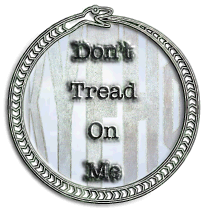|
|
entry index
Not what we have been toldApparently images of Islamic Prophets are
not against the teachings of Islam
I was amazed at this
one.
There is no Quranic injunction against images, whether of Muhammad or anyone else. When it spread into the Levant, Islam came into contact with a version of Christianity that was militantly iconoclastic. As a result some Muslim theologians, at a time when Islam still had an organic theology, issued "fatwas" against any depiction of the Godhead. That position was further buttressed by the fact that Islam acknowledges the Jewish Ten Commandments--which include a ban on depicting God--as part of its heritage. The issue has never been decided one way or another, and the claim that a ban on images is "an absolute principle of Islam" is purely political. Islam has only one absolute principle: the Oneness of God. Trying to invent other absolutes is, from the point of view of Islamic theology, nothing but sherk, i.e., the bestowal on the Many of the attributes of the One. The claim that the ban on depicting Muhammad and other prophets is an absolute principle of Islam is also refuted by history. Many portraits of Muhammad have been drawn by Muslim artists, often commissioned by Muslim rulers. There is no space here to provide an exhaustive list, but these are some of the most famous: A miniature by Sultan Muhammad-Nur Bokharai, showing Muhammad riding Buraq, a horse with the face of a beautiful woman, on his way to Jerusalem for his M'eraj or nocturnal journey to Heavens (16th century); a painting showing Archangel Gabriel guiding Muhammad into Medina, the prophet's capital after he fled from Mecca (16th century); a portrait of Muhammad, his face covered with a mask, on a pulpit in Medina (16th century); an Isfahan miniature depicting the prophet with his favorite kitten, Hurairah (17th century); Kamaleddin Behzad's miniature showing Muhammad contemplating a rose produced by a drop of sweat that fell from his face (19th century); a painting, "Massacre of the Family of the Prophet," showing Muhammad watching as his grandson Hussain is put to death by the Umayyads in Karbala (19th century); a painting showing Muhammad and seven of his first followers (18th century); and Kamal ul-Mulk's portrait of Muhammad showing the prophet holding the Quran in one hand while with the index finger of the other hand he points to the Oneness of God (19th century). Some of these can be seen in museums within the Muslim world, including the Topkapi in Istanbul, and in Bokhara and Samarkand, Uzbekistan, and Haroun-Walat, Iran (a suburb of Isfahan). Visitors to other museums, including some in Europe, would find miniatures and book illuminations depicting Muhammad, at times wearing his Meccan burqa (cover) or his Medinan niqab (mask). There have been few statues of Muhammad, although several Iranian and Arab contemporary sculptors have produced busts of the prophet. One statue of Muhammad can be seen at the building of the U.S. Supreme Court, where the prophet is honored as one of the great "lawgivers" of mankind. There has been other imagery: the Janissaries--the elite of the Ottoman army--carried a medallion stamped with the prophet's head (sabz qaba). Their Persian Qizilbash rivals had their own icon, depicting the head of Ali, the prophet's son-in-law and the first Imam of Shiism. As for images of other prophets, they run into millions. Perhaps the most popular is Joseph, who is presented by the Quran as the most beautiful human being created by God. So apparently this business of radically denouncing cartoon images of Muhammad is opposite to the teachings, because it puts Muhammad on par with the God of Islam, Hmmm. 
Posted: Thu - February 9, 2006 at 04:39 PM
|
 Pagan Vigil
Pagan philosopher, libertarian, and part-time trouble maker, NeoWayland watches for threats to individual freedom or personal responsiblity. There's more to life than just black and white, using only extremes just increases the problems. My Thinking Blogger Nominees
Recent
Comments Search
Categories
Guest
Articles Interested in Pagan•Vigil hosting your articles? I'm always looking for tantalizing content that makes people think. Look here for details. E Pleb Neesta AdSense
Pagan Vigil assumes no responsibility for the advertisement content provided by Google, which is neither selected nor endorsed by NeoWayland.
NeoLinks
The News Right Now Radio Free Europe/Radio Liberty
Reason Magazine - Hit & Run Sunni Maravillosa and the Conspirators
Hammer of Truth Life, Liberty and the Pursuit of... Lady Liberty's Constitution Clearing House Law Enforcement Against Prohibition
no authority Center for a Stateless Society
Tammy Bruce.com Latino Issues: A Conservative Blog
The Nation
RealClimate
Papers, Please!
Letter from Hardscrabble Creek
You Are Not Alone A Big Idea from Eject! Eject! Eject! Fully Informed Jury Association World's Smallest Political Quiz Animated Introduction to the Philosophy of Liberty Institute for Liberty and Democracy
World of Ends 60 Second Refutation of Socialism, While Sitting at the Beach from Coyote Blog
World Religions - Religious Forums Ontario Consultants on Religious Tolerance
Who links to me? NeoBlogs
Books
Listmania - Liberty Basics
Legal
All Guest Articles are © copyright by their respective authors for the date given and subject to the specific restrictions and permissions as stated in that article entry. Guest Article restrictions and permissions are specific to each article and may not be applied to another Guest Article.
Views and opinions expressed in Guest Articles do not necessarily reflect those of NeoWayland. Content from other sources is quoted under the fair use laws of the United States with clear reference to the source material. Unless otherwise noted, all other content at :
www.paganvigil.com Additional Redirect/Frame pages may be found at these web addresses:
members.aol.com/ If your web browser does not show one of these addresses, then this page being used without permission of the author. The views expressed by NeoWayland are his own and do not represent any other enity. NeoWayland freely accepts individual and sole responsibility for his words and actions. XML/RSS Feeds
Statistics
|